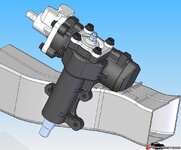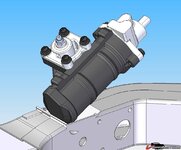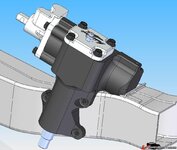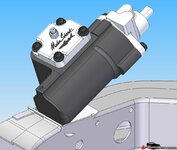Motivational
Active member
- Joined
- Mar 13, 2014
- Messages
- 31
Is there a bolt in light weight steering box for C2 or C3 with manual steering? I don't want to put a rack and pinion in. Thanks.
Not that I know of.....fairly sure I would have read about one, long as I been hanging on the .net in vette groups.....
maybe someone else knows more, so hang on.....
for manual steering, I suspect the rack weighs as much, and BTW, nice car, seen the pix on the intro.....
Like MY car, nothing stock from wheels to roof, not nuttin'....:devil::crutches:
it's on my sites below......
Have you looked at the weight loss thread? There is a ton (no pun intended) of good weight loss info there.
Is there a bolt in light weight steering box for C2 or C3 with manual steering? I don't want to put a rack and pinion in. Thanks.
I went so far as designing a billet aluminum housing for a Delphi 600 box but never took it any further.
I might be interested in working with you on this. We met when I came by your house to see your install on the Dana rear-end about a year ago.
A base FEA is bit hard to do unless you know the loads to crank into the model. Another way to look at it is to reverse engineer the part based on the assumption that the original part is stressed to the limit. This will give you a bit conservative result since casting thickness may be governing. When you do his you get about 1/3 thicker to account for stiffness and fatigue. A third way to look at it is to measure a similar box that was cast in Alu. I believe both Ford and Chrysler used the same internals in an Alu. case. And a fourth way, get the design drawings for the Grand Sport steering box.
Why are your machining it as opposed to casting it?
George
I might be interested in working with you on this. We met when I came by your house to see your install on the Dana rear-end about a year ago.
A base FEA is bit hard to do unless you know the loads to crank into the model. Another way to look at it is to reverse engineer the part based on the assumption that the original part is stressed to the limit. This will give you a bit conservative result since casting thickness may be governing. When you do his you get about 1/3 thicker to account for stiffness and fatigue. A third way to look at it is to measure a similar box that was cast in Alu. I believe both Ford and Chrysler used the same internals in an Alu. case. And a fourth way, get the design drawings for the Grand Sport steering box.
Why are your machining it as opposed to casting it?
George




